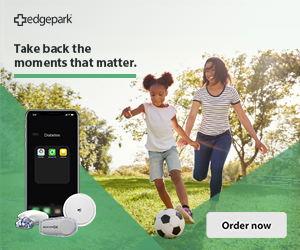New to CGM therapy? Here are the basics
As someone who enjoys analyzing data and trendlines, I've been an avid user of continuous glucose monitor (CGM) therapy for almost a decade. The idea is relatively simple: A wearable sensor provides real-time blood glucose data, and the user can see this data on a receiver and make dosing decisions or insulin adjustments.
The beauty comes in seeing trends instead of just an isolated blood glucose data point. The trend aspect brings more context to the numbers and allows you to more accurately predict future readings.
A review in Diabetes Technology & Therapeutics showed that CGM therapy can help reduce hemoglobin A1C (HbA1c) and mean glucose. The participants in these studies included those with type 1 diabetes (t1d) and type 2 diabetes, as well as those on multiple daily injections and insulin pump therapy. The bottom line is CGM therapy can be a valuable tool when it comes to diabetes management.
Components of a CGM system
While several CGM brands are available, each system has the same three general components:
- Sensor. The sensor is composed of a thin wire, adhesive patch, and mounting mechanism for the transmitter. Most CGM systems include an insertion device to assist with the sensor placement, including the small wire just under the skin.
- Transmitter. The transmitter is an electronic device placed in contact with the sensor. Its function is to transmit the sensor's blood glucose readings to a receiving device, usually using a Bluetooth signal.
- Receiver. The receiver device can vary significantly across brands. Most brands have a stand-alone device option, but some are also compatible with certain insulin pumps and mobile apps.
Insurance considerations
As far as insurance goes, you can take a couple of different routes. The first option is to call your insurance company and inquire about coverage for a CGM system. With more studies demonstrating the benefits of CGM therapy, insurance companies have opened up their options and coverage amounts for these systems.
A second option is to talk to your doctor, perform your own research, and reach out to the specific CGM company you're most interested in trying. CGM companies are well equipped to gather the appropriate information and reach out to your insurance on your behalf. This method provides some efficiency since the CGM company has a relationship with the insurance company and understands the specific documentation requirements.
Current CGM systems
Now that you know the basics, the next step is to take a closer look at which CGM system fits best into your diabetes management routine.
- Dexcom™ G6. Dexcom's system provides the user with blood glucose readings every five minutes, and the latest generation doesn't require fingersticks! Currently, this system integrates with the Tandem t:slim X2 insulin pump to automatically adjust pump settings based on the glucose readings.
- MiniMed™ Guardian Connect. The MiniMed Enlite CGM is compatible with Medtronic's suite of insulin pumps and includes mobile apps to share data with family, friends, or care providers.
- Abbott's FreeStyle Libre 2™. The FreeStyle Libre 2 system boasts one of the longest sensor-wear periods of all the CGM systems, currently rated at 14 days. And the sensor itself is small and discreet.
Once you've decided on a CGM system, you can set up a CGM ContinuCare order through Edgepark.
Ready to go beyond the basics of CGM therapy? Check out these tips on matching the best CGM to your lifestyle.




